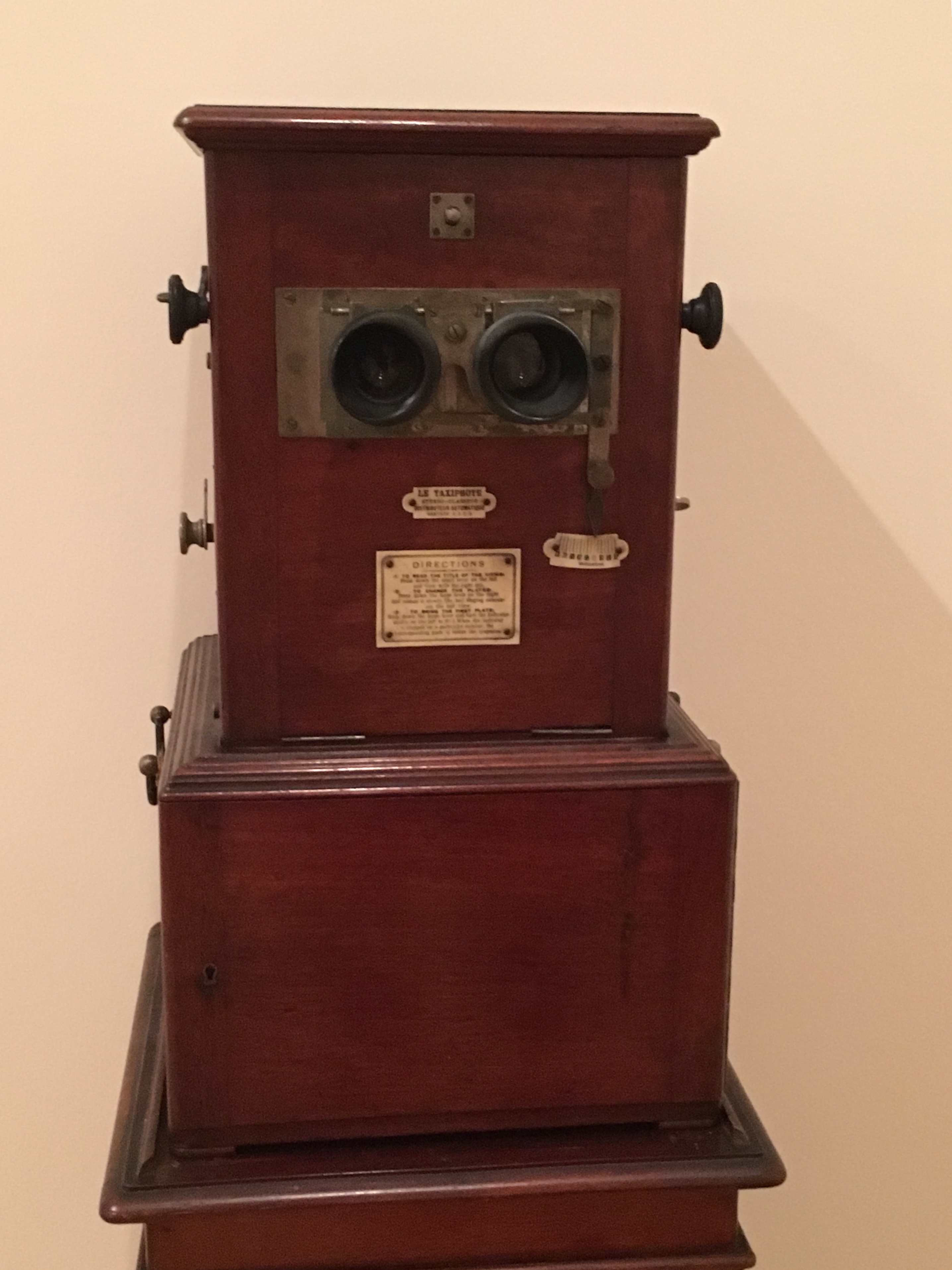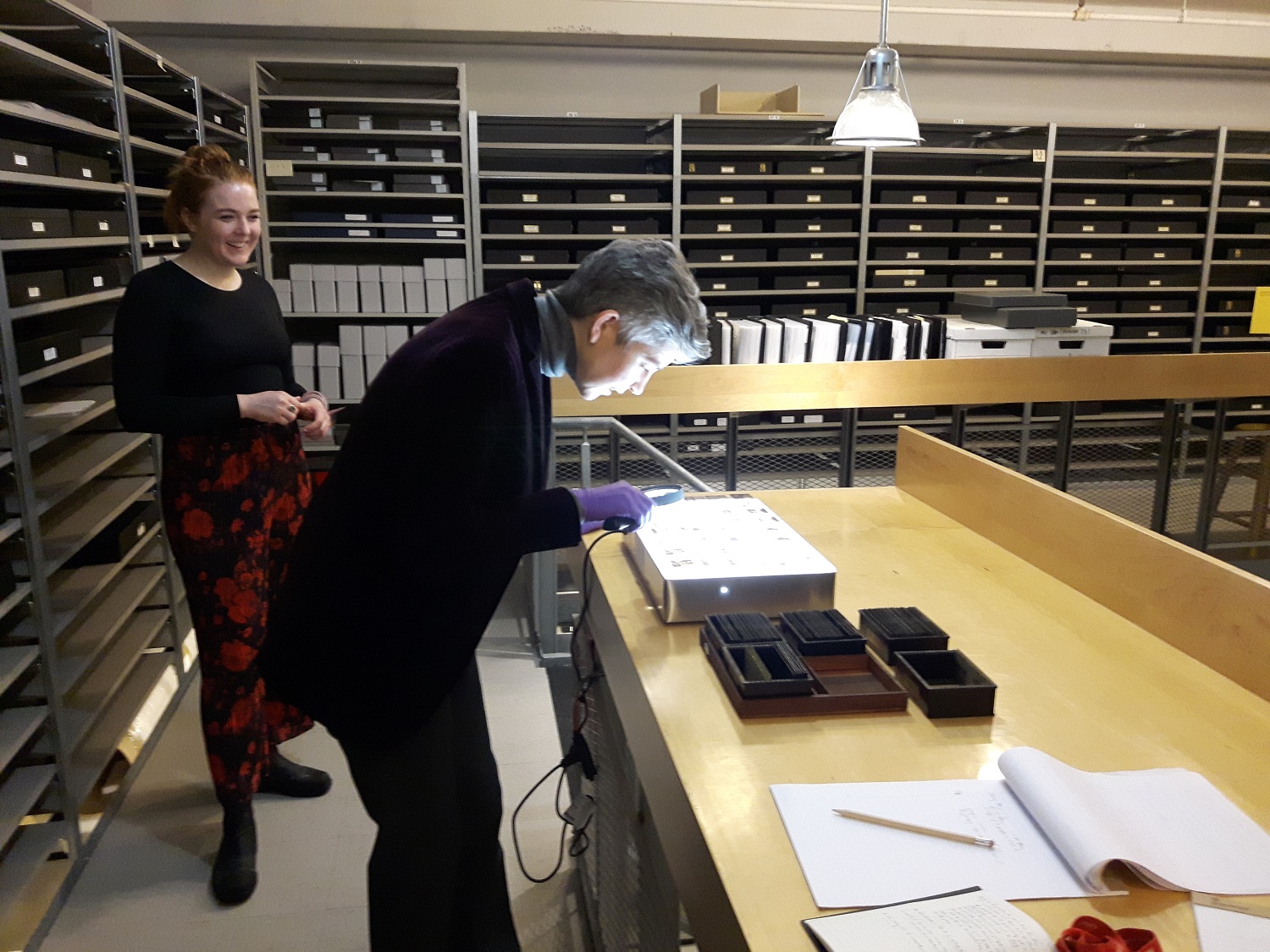3-D History

Image by the AGO.
Long before 3-D movies, before 3-D printing and before virtual and augmented reality, there was the humble stereoscopic viewer. Think of it as a very early version of the View-Master you played with as a kid. A stereoscopic viewer combines one left-eye visual and one right-eye visual into a 3-D image.
The AGO’s photography collection has hundreds of stereographs and viewing devices. And we just installed a particularly special object for visitors to check out. Le Taxiphote, a floor model stereoscopic viewer, was created around 1900 by a French maker named Jules Richard, and is now on view in the Edmond G. Odette Family Gallery.
A special shout-out goes to the AGO’s photography conservator Katy Whitman for keeping this 100+ year-old object fully functional—it’s no easy feat. The stereoscopic viewer’s complex internal mechanism is inspired by clock making.
La Taxiphote arrived at the Gallery with 20 trays filled with delicate glass stereoscopic slides. A stereograph is different from a regular photograph in that it’s actually a pair of photographs on a single support, in this case glass. Most of La Taxiphote’s slides date between 1913 and 1916.
Although this was in the middle of the First World War, the images depict the leisurely and presumably wealthy lifestyle of a Canadian family – visiting cottages in Georgian Bay, sailing in the Bay of Quinte, travelling internationally and picnicking under trees.
AGO visitors who want to take a look for themselves can join our guided viewing sessions, taking place at Odette Gallery at 2 pm daily and at 7:30 pm on Wednesday and Friday nights.
Are you an AGOinsider yet? If not, sign up to have stories like these delivered straight to your inbox every week.


